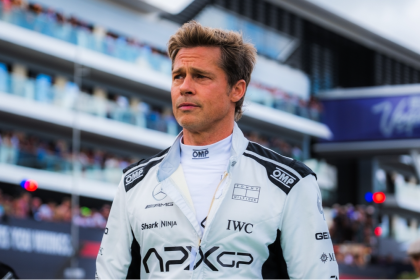A beauty writer’s controversial experiment challenges century-old hair care beliefs

The unconventional beginning
In the realm of modern beauty culture, where routine trims are almost sacrosanct, one beauty writer’s decision to stop cutting her hair for an entire year has become a topic of both intrigue and debate. Tresa Topper, a seasoned beauty journalist, did not embark on her year-long experiment with meticulous planning. Instead, it began out of frustration and a deep sense of betrayal after watching her treasured 20-inch mane reduced to 12 inches through a series of salon visits. What started as a personal protest against conventional hair care practices grew into a broader reflection on identity, cultural norms, and the myths surrounding hair growth.
Cultural identity through strands
Topper’s hair journey held deeper significance than mere aesthetics; it was a journey woven into her identity. As a mixed-race individual in a predominantly white community, her relationship with her hair was complicated. It carried cultural weight, serving as a bridge between her heritage and her environment. Growing up, she felt the pressure to fit into the conventional beauty mold that often dismissed textured and curly hair as less desirable. Each inch of growth or loss had a personal resonance, tying her sense of identity to the condition of her hair.
In a society where hair can signify belonging or exclusion, Topper’s decision to stop trimming was more than an experiment—it was a declaration of self-acceptance. With every inch that grew, she grappled with the notion of what beauty really meant and whether it could align with her roots, both literal and figurative.
Debunking the trim myth
One of the most eye-opening lessons from Topper’s year without haircuts was confronting the widely accepted belief that trimming hair frequently accelerates growth. Hair care experts often advise that regular trims help prevent split ends and breakage, promoting healthier hair in the long run. However, they do not directly speed up the rate at which hair grows from the scalp.
This insight led Topper to reconsider her approach to hair maintenance. While trimming does play a role in preserving hair quality and preventing damage, the actual process of growth is regulated by genetics, hormones, and overall health. The realization that hair growth isn’t directly tied to the frequency of trims challenges a foundational aspect of hair care advice.
The science of growth
Hair growth is not a one-size-fits-all phenomenon. The speed and pattern at which hair grows depend on a variety of factors, from genetics to individual hair type. People with fine hair may need to visit the salon every four to six weeks to keep it healthy, while those with thicker or curlier hair may find that their hair thrives with less frequent attention.
Topper’s findings emphasize the importance of understanding your unique hair needs. Rather than following generalized guidelines, personalized routines that align with one’s hair type can lead to better results. Growth, after all, is influenced by internal factors like nutrition, thyroid function, and general health, in addition to external care.
Beyond the surface
The emotional impact of hair care choices, especially in communities of color, cannot be overstated. For many, hair serves as a cultural touchstone, carrying ancestral significance and personal history. This becomes especially evident when salon visits lead to unexpected outcomes. Topper’s experiment highlighted that the misinterpretation of client preferences or a lack of cultural competency among stylists could make the experience feel disheartening.
The idea of having one’s identity tied to hair goes beyond aesthetics; it speaks to the broader challenge of achieving cultural competence in beauty services. Clear communication between clients and professionals is vital for preserving trust and ensuring that hair care experiences align with individual expectations.
The health factor
Topper’s year-long experiment showed that hair health depends on more than just trimming or styling choices. Nutrition and overall wellness play a significant role in hair growth. A diet rich in vitamins and minerals, particularly those that support the hair and scalp, can enhance growth and strength. Scalp health, in particular, became a focal point of Topper’s understanding. Regular scalp massages, hydration, and good hygiene practices help maintain the skin and hair follicles, laying the groundwork for healthy hair growth.
Additionally, factors such as thyroid function can affect hair health and growth. While hair growth may be slow or stagnant due to underlying health issues, addressing these conditions through medical guidance can contribute to better hair outcomes.
Professional perspectives
The journey revealed another key insight: finding skilled stylists who understand and respect diverse hair types remains a significant challenge. Topper’s experience underscored that while many salons offer general hair services, they may not be equipped with the technical expertise or cultural awareness necessary for textured hair. Hair professionals who appreciate the nuances of different hair types can offer better care and results.
For clients with textured hair, finding a stylist who prioritizes both technical skill and cultural understanding can make all the difference. The right professional knows that a one-size-fits-all approach does not apply to every hair type, and they adjust their methods accordingly.
The year without trims
As Topper’s year without haircuts came to an end, it became clear that her experience was more than just a personal experiment—it was an exploration of identity, beauty, and self-empowerment. The decision to refrain from trimming her hair brought unexpected insights that resonate with broader conversations about hair care and cultural identity.
Her experiment revealed that while traditional beauty practices have their place, embracing a more customized approach can empower individuals to take control of their hair’s health and growth. This journey challenged ingrained beliefs and fostered a deeper understanding of how hair care intersects with identity.
For Topper, the lessons from this year are not just about hair growth but about redefining personal standards of beauty and embracing one’s unique characteristics. As she looks to return to regular trims in 2025, her insights encourage others to balance traditional hair care wisdom with personal needs and cultural considerations.














